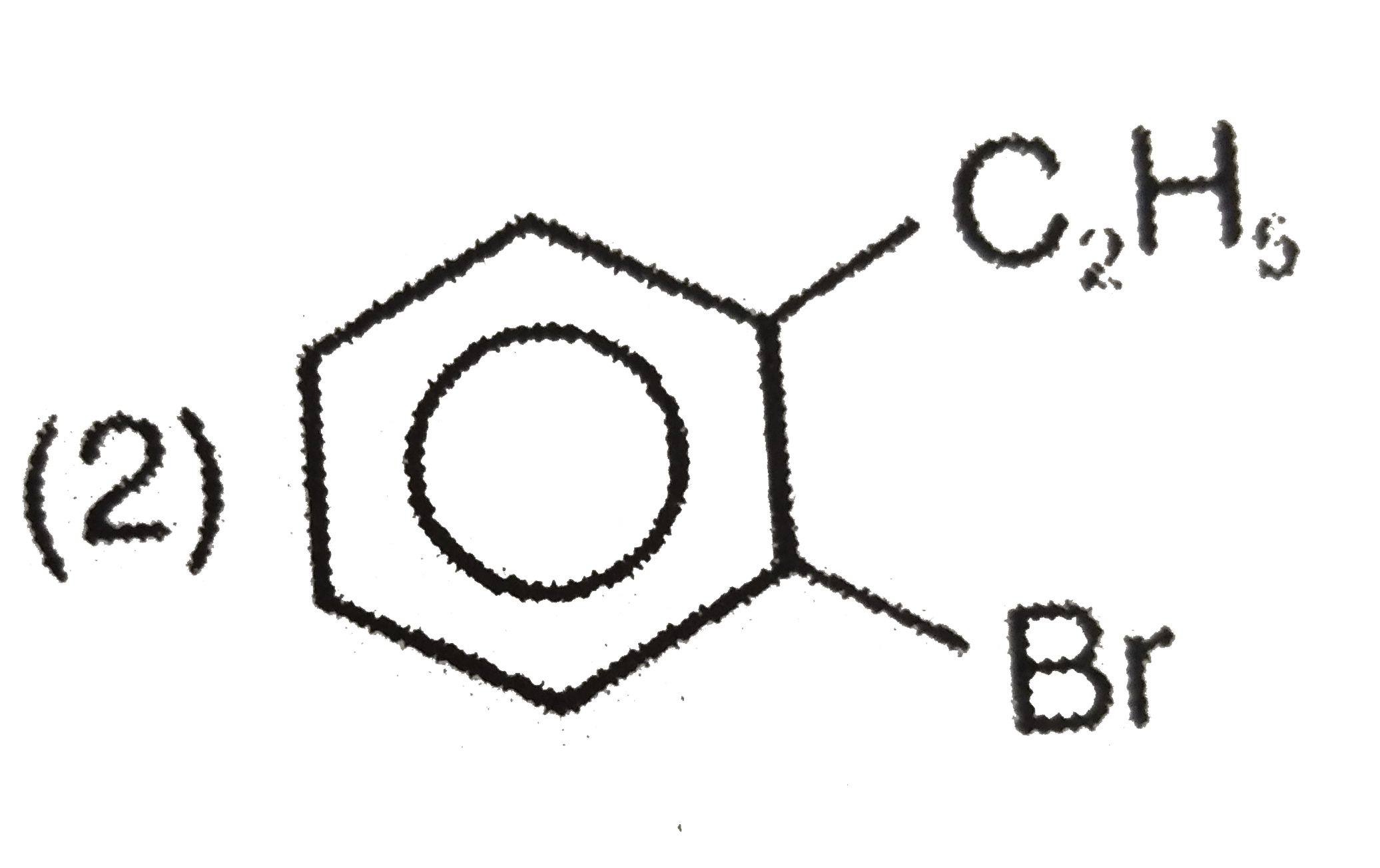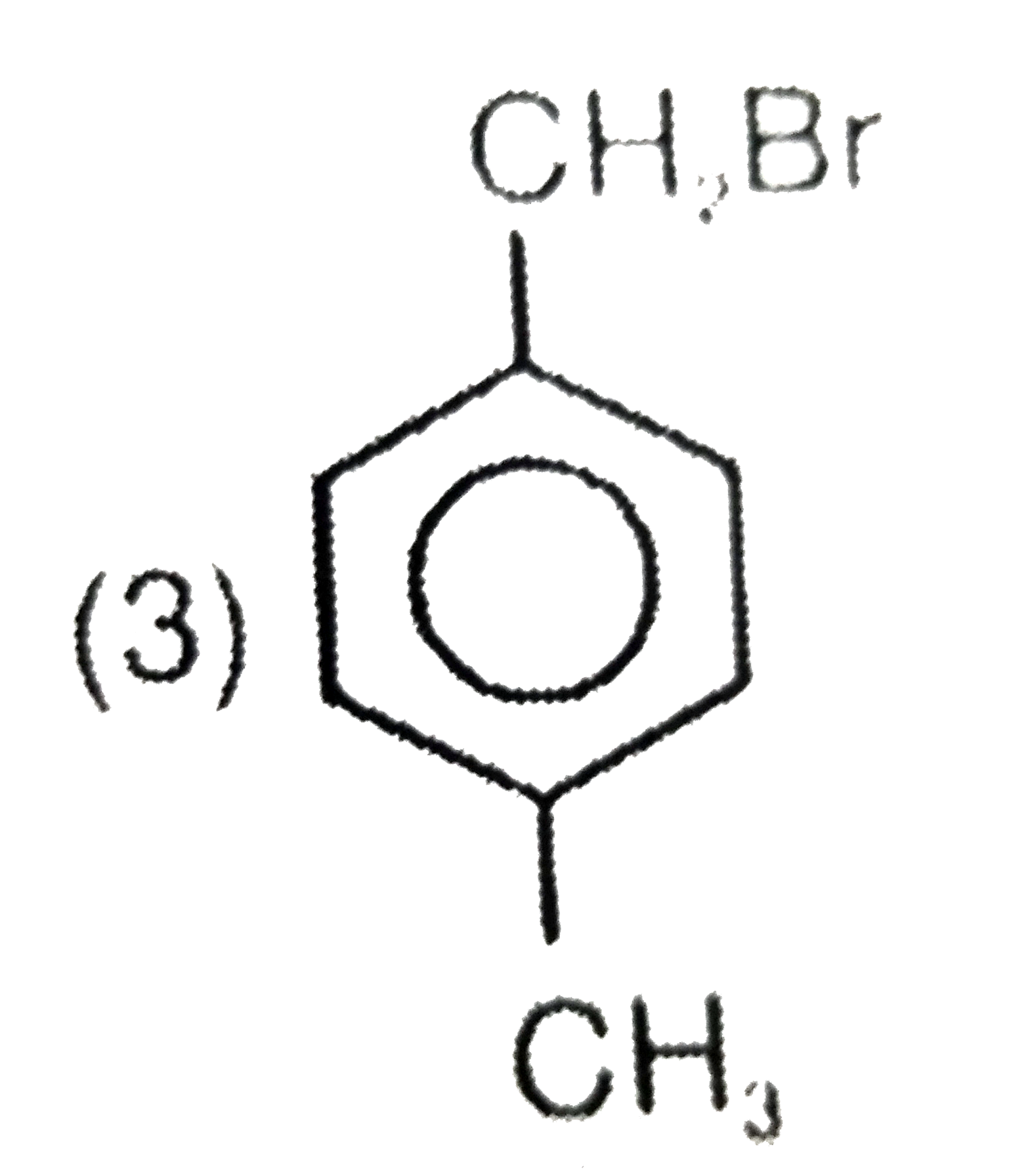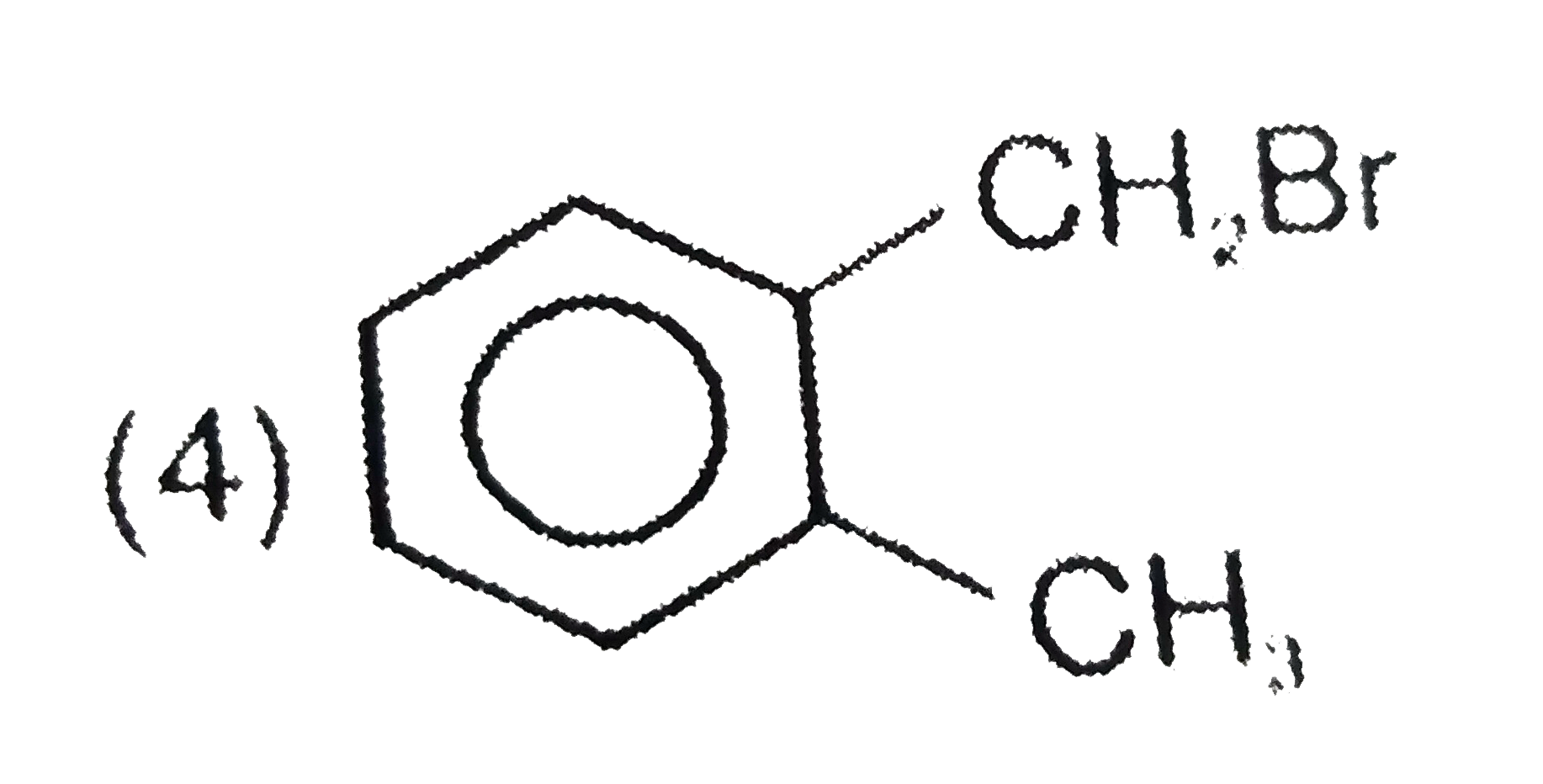Compound (A), C8H6NOBr, is optically active. Reduction of (A) gives (B) which reacts with nitrouos acid to form (C), dihydric alcohol. Benzene sulphonyl chloride reacts with (B) to give a product soluble in NaOH. Hydrolysis of (A) gives (D) which is an optically active acid. (A) does not give any precipitate with aqueous AgNO3 . Controlled oxidation of (A) gives monobromo benzoic acid. Compound (A) on reaction with Br2/Fe gives only one compound. Identify (A), (B), (C), and (D).
i. DU in A = ((2nC+2)−nH+nX−nN2
=(8×2+2)−(6+1−1)2
=6∘
ii. Six DU and (C:H≈1:1) suggest a benzene ring (4 DU) and 2 DU (for C≡N) group, since (A) on hydrolysis gives acid.
iii. Reactions can be summarised as follows:

iv. So, (A) is a hydroxy compound with (C≡N) group and benzene.
v. (A) AgNO3−−−→ No ppt. It suggests BR in the benzene ring.
vi. (A) [O]−−→  (Monobromo benzoic acid) (Br can br o-, m- or p- w.r.t. (−−COOH) gp.)
(Monobromo benzoic acid) (Br can br o-, m- or p- w.r.t. (−−COOH) gp.)
vii. Br2/Fe−−−−→ Gives only one product, it suggests thatBr is present in para-position, (OMP = 231).
viii. Since, (A) is chiral, so the possible structure of (A) is:

Topper's Solved these Questions
- ALCOHOL,PHENOL AND ETHERSBOOK - CENGAGE CHEMISTRYCHAPTER - ALCOHOL,PHENOL AND ETHERSEXERCISE - Exercises Concept Application
33 Videos
- ALCOHOL,PHENOL AND ETHERSBOOK - CENGAGE CHEMISTRYCHAPTER - ALCOHOL,PHENOL AND ETHERSEXERCISE - Exercises Linked Comprehension
60 Videos
- ALCOHOL,PHENOL AND ETHERSBOOK - CENGAGE CHEMISTRYCHAPTER - ALCOHOL,PHENOL AND ETHERSEXERCISE - Solved Examples
17 Videos
- ALIPHATIC AND AROMATIC ALDEHYDES AND KETONESBOOK - CENGAGE CHEMISTRYCHAPTER - ALIPHATIC AND AROMATIC ALDEHYDES AND KETONESEXERCISE - Archives Subjective
29 Videos
Similar Questions
Compound (A) and (B) are isomers having C8H10. On oxidation (A) gives benzoic acid while (B) gives phthalic acid which forms an anhydride (C) on heating. Identify (A), (B) and (C).
View SolutionCompound (A) C8H9Br. Gives a white precipitate when warmed with alcoholic AgNO3. Oxidation of (A) gives an acid (B). C8H6O4. (B) easily forms anhydride on heating. Identify the compound (A)
View Solution
Knowledge Check
Compound (A) ,C8H9Br gives a white precipitate when warmed with alcoholic AgNO3 Oxidation of (A) gives an acid (B) C8H6O4 (B) easily forms anhydride on heating Identify the compound (A)
A B
B C
C D
D
Compound (A) C8H9Br, gives a white precipitate when warmed with alcoholic AgNO3. Oxidation of (A) gives an acid (B),C8H6O4. (B) easily forms anhydride on heating. Identify the compound (A)
A B
B C
C D
D
Compound (A) ,C8H9Br gives a white precipitate when warmed with alcoholic AgNO3 Oxidation of (A) gives an acid (B) C8H6O4 (B) easily forms anhydride on heating Identify the compound (A)
A B
B C
C D
D
Compound (A) C8H9Br. Gives a white precipitate when warmed with alcoholic AgNO3. Oxidation of (A) gives an acid (B). C8H6O4. (B) easily forms anhydride on heating. Identify the compound (A)
View SolutionAn organic compound (A)(C5H8O3) on heating with soda lime gives (B) which reacts with HCN to give (C). The compound (C) reacts with thionyl chloride to produce (D) which on reaction with KCN gives a compound (E). Alkaline hydrolysis of (E) gives a salt (F) which on heating with soda lime produces n−butane. Careful oxidation of (A) with dichromate give acetic acid and malonic acid. Give the structures to (A) to (F) with proper reasoning.
View SolutionAn organic compound (A)(C5H8O3) on heating with soda lime gives (B) which reacts with HCN to give (C). The compound (C) reacts with thionyl chloride to produce (D) which on reaction with KCN gives a compound (E). Alkaline hydrolysis of (E) gives a salt (F) which on heating with soda lime produces n−butane. Careful oxidation of (A) with dichromate give acetic acid and malonic acid. Give the structures to (A) to (F) with proper reasoning.
View SolutionCompound (A), C8H9Br, gives a white precipitate when warmed with alcoholic AgNO3. Oxidation of (A) gives an acid (B) C8H6O4. (B) easily forms anhydribe on heating. Identify the compound (A).
View SolutionCompound (A), C6H3Br, gives a white precipitate when warmed with alcoholic AgNO3. Oxidation of (A) gives an acid (B). C6H3O4. (B) easily forms anhydride on on heating. Identify the compound (A).
View Solution
